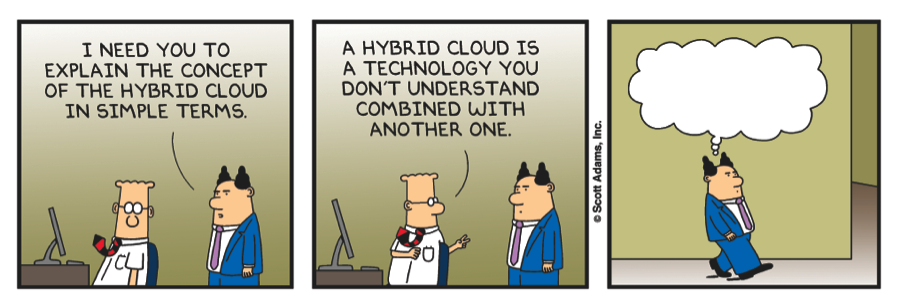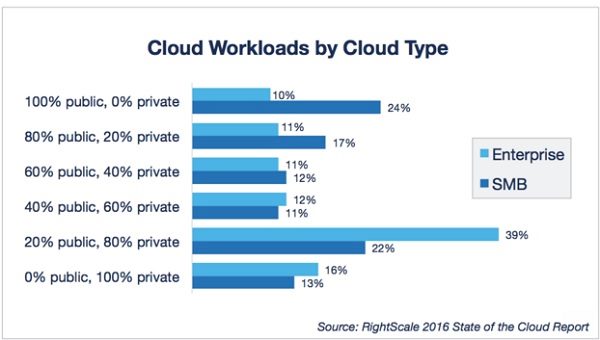The term Hybrid cloud is becoming more common terminology with customers as they adopt cloud as part of their overall IT strategy. But what really is a hybrid cloud and why is that different to cloud as a strategy?

A few years ago the term “cloud strategy” was use to describe the adoption of a cloud vendor. Ultimately, some of these cloud vendors were (and still are) traditional hosting companies who use the term cloud. I have always pushed the fact that cloud really means a true, public, cloud vendor such as Azure or AWS. Hybrid has now taken over as the strategic approach and has been describe by Forrestor’s Dave Bartoletti as “cloud plus anything.” This can mean any of the following:
- AWS & Azure
- Cloud vendor (e.g. AWS) & private data center (private cloud)
- Cloud vendor (e.g. AWS) & hosting party
- etc.
In essence, two (or more) separate environments that will need to work together as one cohesive unit of which one is a public cloud. Inevitably adopting a hybrid cloud strategy makes strategic sense as you cannot just lift and shift everything to a cloud in one go and most likely your strategy will evolve into a multi-cloud strategy once you are free from all (or most of) your private data centers. So hybrid is the logical step between the two.

The RightScale State of the Cloud report indicates that only 10% of enterprise business use the public cloud fully and 16% are fully private cloud. That means there is 74% that have a mixture of two or more clouds (public and private). Things holding back the 16% are topics such as security concerns, outdated policies that prevent adoption or simply a lack of understanding of the benefits over systems already adopted (such as virtualization).
As one size does not fit all, organizations should be looking to train their teams in cloud and getting a full understanding of how they can move existing workloads to the cloud and in what architecture. This is especially important where organizations manage what could be classed as commodity applications (e.g. SharePoint, CMS systems) that can be purchased as a Paas or SaaS offering from a public cloud or product vendor. More specialist, differentiating and legacy applications could continue to be run in a private cloud but leverage technology from the cloud such as off-shore backup or “single pane” management technology.
Building a successful, cohesive, hybrid cloud will take a significant amount of time for most enterprise organizations and we can expect that it is five years away for mainstream adoption to be realized, starting this strategy now is the best approach to being on track with the five year expectation of Gartner.